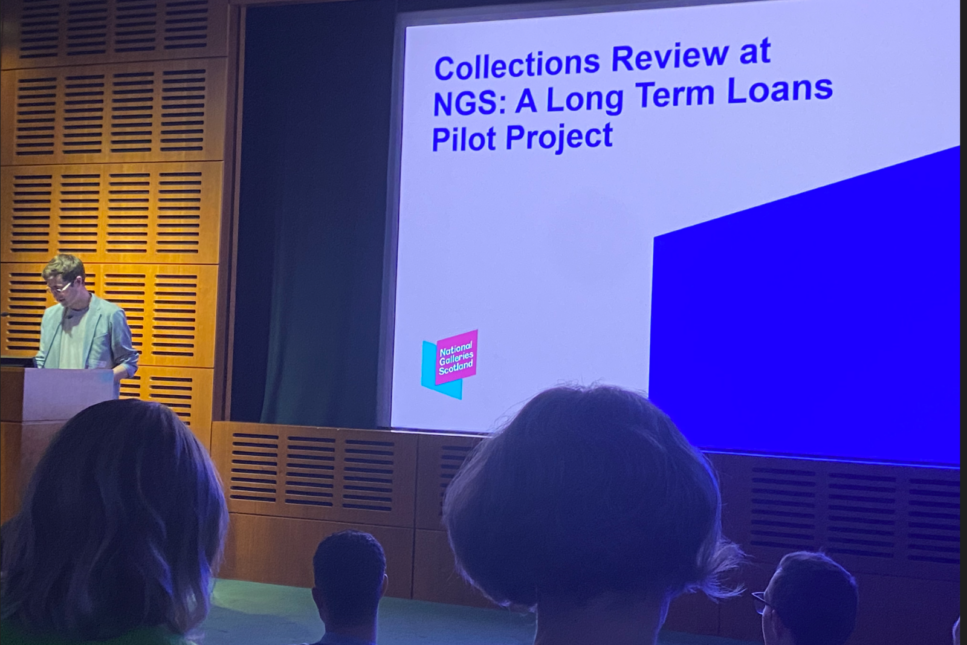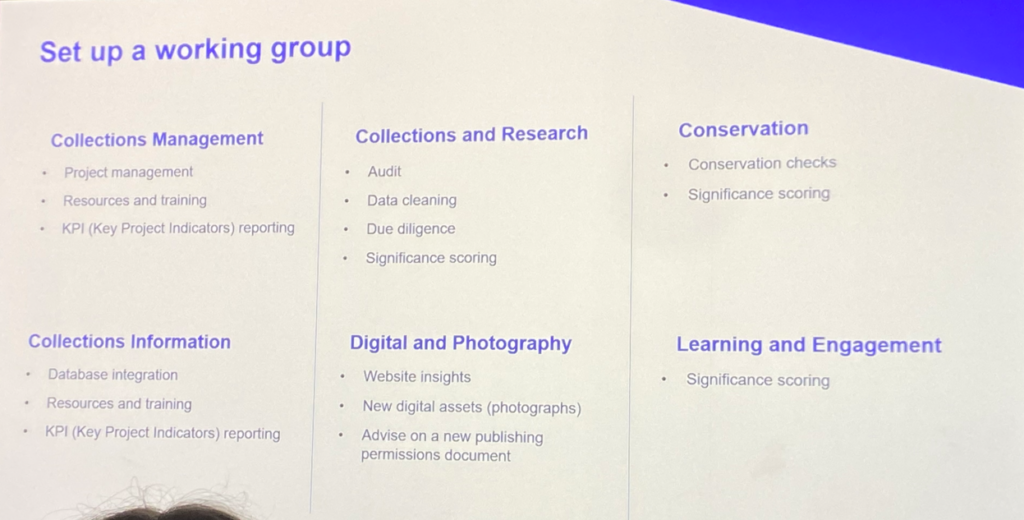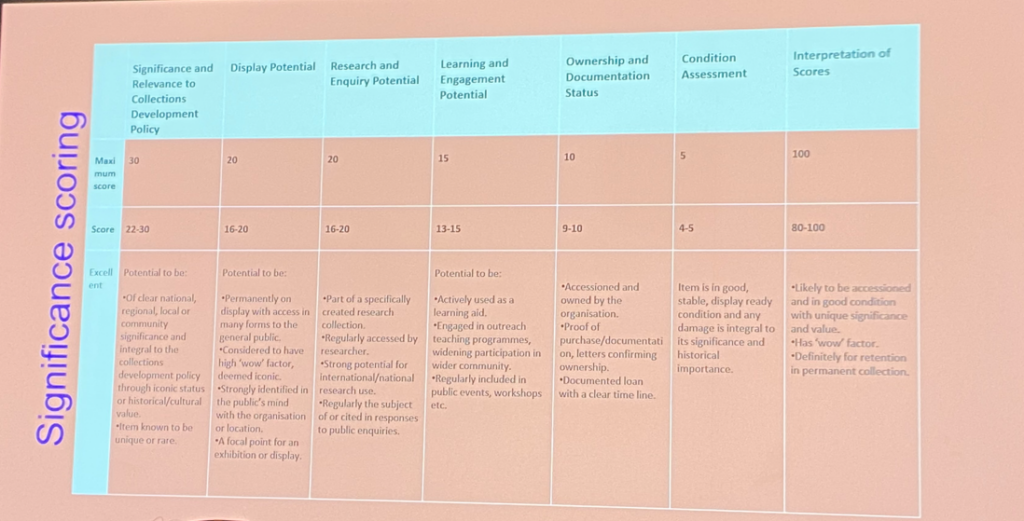

In 2021 National Galleries of Scotland started work on a collections review. NGS has a 200-year history of collecting and yet collections management was only introduced around 35 years ago. As with all historic collections, objects, artworks and loans weren’t always subject to the collections development policies we have in place today. For NGS a review offered the opportunity to:
- Carry out a full audit of collections and collections data
- Introduce a significance scoring approach to appraise strengths and weaknesses in the collection in line with their collections development policy
- improve use of collections
- Improve management of resources – staff time and storage – and reinvest elsewhere
- Promote responsible disposal
Long term loans were identified as an area of the collection that could be used as a test pilot ahead of a full collections review. The advantage long term loans offered was that at the end of the process they could be returned without the challenge of disposal (although returns aren’t always straightforward). Returning loans also frees up storage space, and in the longer term, staff time by reducing the administration of renewals every three years.
In a year (the length of the pilot) 613 loans across 56 lenders, were assessed at NGS. It was time consuming and resource heavy but a manageable number of objects with which to test the approach. The long term loan review offered up statistics and feedback that will inform improvements to the process before its rolled out across the rest of the collection.
At the outset of the project a working group was established. The following slide demonstrates the level of involvement cross-departmentally. Jacqueline Ridge, Director of Conservation and Collection Management NGS, mentioned at the end of the talk how proactive Luke had been at ‘lobbying up’, making sure that everyone was fully invested in the project. You can see how important this must have been for the project to run smoothly.

Once the working group was created, training and workshops were undertaken to familiarise colleagues with process flowcharts, the significance scoring matrix, due diligence forms, documentation requirements and the database. Luke found that one of the areas that colleagues required most support in was the database. Training was continued throughout the process where necessary. Another key to success was mapping out in advance who was responsible for each loan and what the objectives for the year were.
So how did it work practically?
Three months prior to loan renewal the database generated an email requesting a review of valuations of loans. This is important for keeping indemnity up to date at the end of each three-year loan period. Following this an audit and condition check (spot check rather than full condition check), were carried out by curatorial and conservation staff. Information gathered informed significance scoring which was the core tool for the review process:

Learning and engagement, Conservation, and Collections and Research were the three teams involved in completing significance scoring. Luke mentioned that some loans hadn’t been seen by curatorial staff in years, so a decision on renewal wasn’t the only outcome of the review. The whole process ensured that missing information such as due diligence, up to date conservation requirements and fuller object records were updated. In some cases, it also unearthed artworks that were being overlooked in terms of display or research.
It’s clear from the slide how much work was involved. A silver lining, which Luke assured us was not pre-planned, was that the degree of work involved in significance scoring often helped to clarify in curator’s minds the worth of a loan before they even embarked on the form. Return was often easier and less complicated than, for example, a sticky due diligence issue. We all know that this is a reversal of the usual situation. In most cases its easier and quicker for a registrar to shuttle out a new loan agreement and so we continue to renew year upon year. The message here though was that if you put in the work consistently with each renewal you’ll be rewarded in the long term.
By the end of the review 86% of loans had been condition checked, 42% of loans were significance scored and 73% of loan agreements were renewed prior to deadline. A question that occurred to me after the event was what percentage of loans were returned and if they had calculated the space saved in returning them. Other positive outcomes of the review have been; a robust review process for future use, the creation of a new digital permissions document, increased understanding of the significance of loans for research and display purposes and equipping staff with the tools and knowledge required for the full collections review. Perhaps we’ll hear how that goes at a UKRG event in the future.
Blog by Emily Goalen

 Instagram
Instagram  LinkedIn
LinkedIn  Twitter
Twitter  My Account
My Account